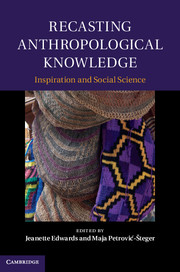Book contents
- Frontmatter
- Contents
- Contributors
- Acknowledgements
- 1 Introduction
- 2 Writing the parallax gap
- 3 Too big to fail
- 4 ???Hybrid custom??? and legal description in Papua New Guinea
- 5 Entomological extensions
- 6 Kinship and the core house
- 7 Invisible families
- 8 Knowledge in a critical mode
- 9 Spools, loops and traces
- 10 Inspiring Strathern
- Bibliography
- Index
2 - Writing the parallax gap
an itinerary
Published online by Cambridge University Press: 07 September 2011
- Frontmatter
- Contents
- Contributors
- Acknowledgements
- 1 Introduction
- 2 Writing the parallax gap
- 3 Too big to fail
- 4 ???Hybrid custom??? and legal description in Papua New Guinea
- 5 Entomological extensions
- 6 Kinship and the core house
- 7 Invisible families
- 8 Knowledge in a critical mode
- 9 Spools, loops and traces
- 10 Inspiring Strathern
- Bibliography
- Index
Summary
The standard definition of parallax is: the apparent displacement of an object (the shift of its position against a background), caused by a change in observational position that provides a new line of sight. The philosophical twist to be added, of course, is that the observed difference is not simply ‘subjective,’ due to the fact that the same object which exists ‘out there’ is seen from two different stances, or points of view. It is rather that . . . subject and object are inherently ‘mediated,’ so that an ‘epistemological’ shift in the subject’s point of view always reflects an ‘ontological’ shift in the object itself. Or, to put it in Lacanese, the subject’s gaze is always-already inscribed into the perceived object itself, in the guise of its ‘blind spot,’ that which is ‘in the object more than object itself,’ the point from which the object itself returns the gaze. ‘Sure, the picture is in my eye, but me, I am also in the picture.’
(Žižek, The Parallax View, emphasis mine).The exposure of epistemic ‘blind spots’ is a critical operation of the anthropological project; the ethnographic text, its apparatus of choice. This essay is an experiment in reading ethnographic texts as expressions of what Žižek terms the ‘parallax effect’ – that is, as inscriptions of knowledge embedded in polyperspectival social acts of ‘solid seeing’ (stereopsis, in New Greek), inclusive of the ethnographer’s eye; inclusive, further of the ethnographer’s warm engendered body. It is this last point that intrigues me, since the entities we render often show no visible signs of our physical presence – which is to say, of our embeddedness as ‘blind spots’ amongst them. A little detective work is required for this presence to appear, and a willingness to follow a writer’s ethnographic itinerary of object relations, as it were ‘on the wing’.
I can think of no more striking example than Marilyn Strathern’s writings on Melanesian art and body-themed aesthetics and sociality. Specifically, I argue that this work’s analytic stance on body-things and thing-bodies, understood as inhabiting the suspenseful space of their hyphenation, to some degree stands in for her entire project of interrogating culture ‘after nature’, and further, that this project is itself an expression of the parallax effect of polyperspectival ‘solid seeing’. An early case in point is ‘The self in self-decoration’ (1979). Drawing from her fieldwork in Mount Hagen, the author is on one level responding to critiques of Self-decoration in Mount Hagen (1971), and on another carrying Melanesian personhood into the wave of Euro-American gender discourse that was at the time seeking recognition for the performance of gendered identity against selective mechanisms of institutionalised erasure.
- Type
- Chapter
- Information
- Recasting Anthropological KnowledgeInspiration and Social Science, pp. 19 - 30Publisher: Cambridge University PressPrint publication year: 2011



